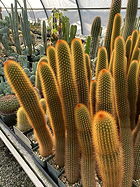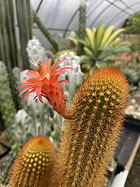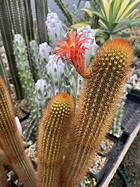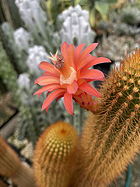DNA analysis of the Cactaceae has clarified many relationships between genera. Those belonging to the same clade, or branch, of the family tree share more DNA than with those outside this clade. Sometimes, this can confer some interfertility between these genera.
I was unaware of this data in 1994 when I crossed two species of the tribe Trichocereeae simply out of curiosity as to what might result. I transferred pollen from a flower of Oroya peruviana, the globular Peruvian species with colorful yellow and hot pink petals in a jaunty arrangement like the cellophane atop a cocktail toothpick. The recipient of the pollen was the stigma of another popular member of the Trichocereeae, the sprawling, yellow-spined “monkey tail” cactus, Cleistocactus winteri (also known as Hildewintera aureispinus or Borzicactus aureispinus).
Several months later, a fruit was harvested, the seeds were sown, and a single seedling grew. It turned out to be a vigorous plant with more robust, columnar stems than the Cleistocactus parent with a similar tendency to arch over and sprawl under its own weight. The spination is what catches the eye, especially when backlit by the late afternoon or low angle winter sun. Its caramel coloration and luminous translucence are reminiscent of the Oroya but both stem morphology and flowers seem to be dominated by the Cleistocactus. Attempts to backcross to Oroya, to confirm its influence in the hybrid, have been elusive as the ephemeral flowers of the Oroya rarely seem to coincide with those of the more floriferous Cleistocactus. Nevertheless, we found two volunteer seedlings from open pollination at the base of the parent in 2019. One has similar brownish spination while the other is more yellow like the Cleistocactus revealing some segregation of genes in the F2 generation. Both are slender columnar and less vigorous than the parent. Perhaps more F2s would result in more compact plants, confirming the presence of the Oroya genes.
After cutting and rerooting several times I have decided to release the plant so that its vivid spination can be enjoyed while the mysteries of its genetics are pondered. Rooted cuts of HBG 108163. $12.
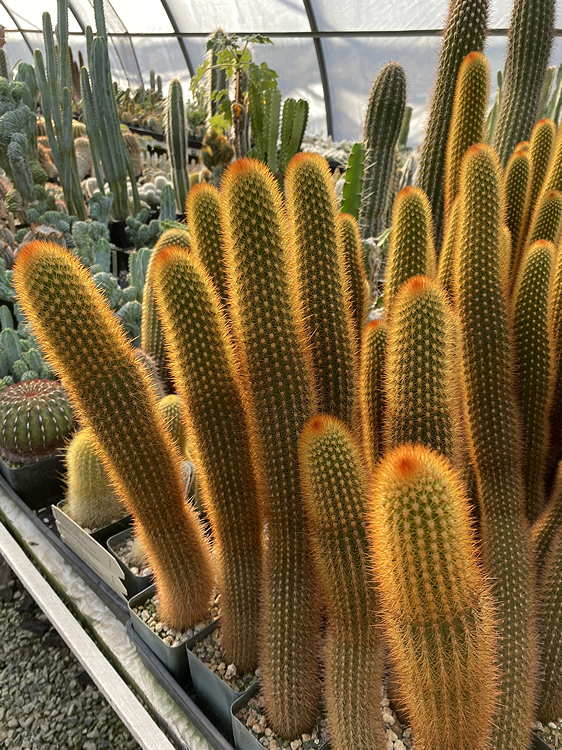
Published in the Cactus and Succulent Journal, Vol. 96 (2), Summer 2024
